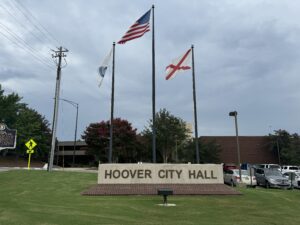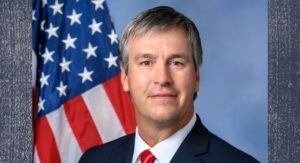Jefferson, Mobile and Montgomery among 2 percent of counties that make up 51 percent of U.S murders

According to data from the Crime Prevention Research Center, 2 percent of counties in the nation make up 52 percent of murders throughout the nation. Alabama has three counties that make up part of that two percent; Jefferson, Mobile, and Montgomery. The state also had the third highest murder rate in the nation in 2016 with 407 murders out of a 4.8 million people population, giving the sate an 8.4 murder rate. According to the Alabama Law Enforcement Agency’s crime in Alabama report: In 2016 Jefferson county endured a total of 104 homicides, 78 of those taking place within the Birmingham city limits. The homicide rate was 15.69 per 100,000 people, and to put that in perspective, the national homicide rate was 5.3 per 100,000 people in 2016. Mobile county experienced a total of 61 homicides in 2016, 44 took place within Mobile city limits, and the homicide rate was 14.71 per 100,000 people. Montgomery county had the lowest number of the three, with only 31 total homicides, 30 taking place within Montgomery city limits. The county’s homicide rate was 13.76 per 100,000 people. According to the Crime Prevention Research Center: In 2014, the most recent year that a county level breakdown is available, 54 percent of counties (with 11 percent of the population) have no murders. 69 percent of counties have no more than one murder, and about 20 percent of the population. These counties account for only 4 percent of all murders in the country. The worst 1 percent of counties have 19 percent of the population and 37 percent of the murders. The worst 5 percent of counties contain 45 percent of the population and account for 68 percent of murders. As shown in figure 2, over half of murders occurred in only 2 percent of counties.” Murders actually used to be even more concentrated. From 1977 to 2000, on average 73 percent of counties in any give year had zero murders. Location is not the only factor in the concentration of murders; according to a 2013 PEW Research Center survey, gun ownership rates in rural areas were 2.11 times higher than in urban areas. In short, suburban households are 28.6 percent more likely to own guns than urban households. Most of the country has both very high gun ownership rates and zero murders. According to the data, murder isn’t a nationwide problem; and few people appreciate the large areas of the country where there are no murders. Researchers say that the problem lies within a very small set of urban areas, and the gun ownership, or lack of legal gun ownership, within those areas. To solve the problem, the Crime Prevention Research Center suggests focusing on the areas where murders are most common and doing what is necessary to reduce the amount of murders in that area. Here is the map detailing the counties in U.S. with highest murder rates:
Americans and guns: It’s really complicated, survey shows

Americans have long had a complex relationship with guns. Now, a new study shows that the country’s deep political divide is reflected in attitudes toward gun control. The Pew survey released Thursday found a sharp drop in overall support for gun control despite common ground on some key issues. For example, when people were asked whether it was more important to protect gun rights or control gun ownership, 51 percent favored gun control and 47 percent favored gun rights. Compare that with responses in 2000, when two-thirds of those surveyed said they supported gun control measures. People in the new survey were in broad agreement when asked about specific gun control measures. Some 89 percent supported preventing the mentally ill from buying guns and 84 percent of all adults supported background checks for private sales and at gun shows. Barring gun purchases for people on no-fly lists won support from 83 percent, while 71 percent of adults, including a small majority of gun owners, supported a federal database tracking gun sales. The survey showed wide disparities in how people view firearms along political, gender, racial and geographic lines. The gaps come at the start of President Donald Trump’s term. He is seen as one of the most gun-friendly presidents and could be supported by a Republican-controlled Congress, although there has been little action on gun issues since January. About half of the public said making it more difficult to purchase a firearm would mean fewer mass shootings, while a little over one-third said it would have no impact. Most people attribute gun violence to the ease in illegally getting access to a firearm, and the public can’t decide whether making it easier to legally purchase a firearm would lower or raise the crime rate. Republicans have made the most significant shifts on guns while Democrats have remained consistent in their views, said Kim Parker, Pew’s director of social trends research. “This reflects that the issue has really become more polarized, more driven by partisan attitudes,” Parker said. The study also showed that people in the United States, whether they own a firearm or not, have broad exposure to guns. At least two-thirds have lived in a household with guns and about 70 percent have fired a gun. The main reason most cited for wanting to own a gun? Protection. Two-thirds of gun owners say they own a gun to protect themselves or loved ones. Nearly one-third of gun owners have five or more. Still, just one-quarter of them said they usually carry a firearm outside the home. That willingness to purchase a firearm is despite the fact that 44 percent of adults said they personally know someone who was shot and about one-quarter say they or a family member have been threatened or intimidated by someone with a gun. The Pew Research Center sought to better understand Americans’ “complex relationship” with firearms. Researchers wanted to see people’s views on various policy issues – from safe storage of firearms around children to limits on who and where someone can carry a gun. Republished with permission of The Associated Press.
Visa overstays often overlooked in border security debate
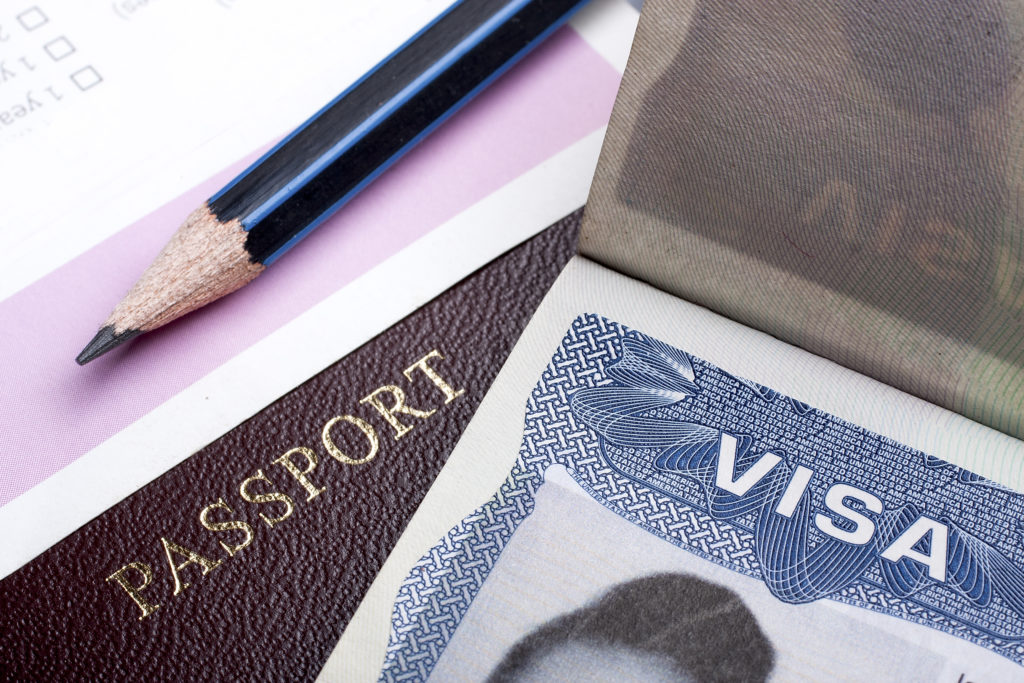
More than 20 years had elapsed since the U.S. government estimated how many people entered the country legally and overstayed their visas. The updated numbers, finally published in January, were sobering. The Homeland Security Department said 527,127 people who were supposed to leave the country in the 2015 fiscal year overstayed, more than the population of Atlanta. And that was only those who entered by plane or ship, not on land. To put that in perspective, the Border Patrol made 337,117 arrests of people entering the country illegally during the same period, nearly all on the border with Mexico. More people overstayed visas than were caught crossing the border illegally. An estimated 40 percent of the 11.4 million people in the U.S. illegally overstayed visas, a crucial but often overlooked fact in the immigration debate. That percentage may grow as India and China replace Mexico as the largest senders of immigrants to the United States. Mexicans have long entered illegally through deserts of California, Arizona and Texas but the absence of a shared border makes that route unlikely for Asians. Overstays accounted for about 1 percent of 45 million visitors on business and tourist visas from October 2014 to September 2015, according to the long-awaited Homeland Security report. Canada occupied the top slot for overstays, followed by Mexico, Brazil, Germany and Italy. The United Kingdom, Colombia, China, India and Venezuela rounded out the top 10. The Pew Research Center said last year that more Mexicans were leaving the United States than coming, ending one of biggest immigration waves in U.S. history. Lack of jobs for unskilled labor after the Great Recession is widely cited as a reason but border enforcement played a part. The Border Patrol more than quintupled to 21,444 agents in 2011 from 4,028 in 1993. The U.S. erected fences along about 650 miles of border with Mexico, nearly all of it in the final years of George W. Bush’s administration. Last year, Border Patrol arrests – one gauge of illegal crossings – fell to the lowest level since 1971. About five years ago, the busiest corridor for illegal crossings began shifting from Arizona to South Texas, where roughly two of every three apprehended are from countries other than Mexico. Large numbers of women and children from Central America turned themselves in to U.S. authorities, triggering lengthy proceedings in clogged immigration courts. Images of children crammed into Customs and Border Protection holding cells made big news in 2014. “We weren’t chasing people. People were walking up, looking for someone in a green uniform,” said Customs and Border Protection Commissioner R. Gil Kerlikowske. “There were smugglers that would call 911 and say, ‘Hey, we got some people coming across.’ It was a border management issue, not a border security issue … Do you have health care personnel? Do you have food? Do you have clothing?” The government has taken steps to better track overstays, but it’s a tall order without a good checkout system. Airports weren’t designed to inspect visitors when they leave. The U.S. and Canada have exchanged names of people from third countries who enter on their shared border since 2013, but Mexico generally doesn’t track who enters by land. Congress has long pressed for biometric screening such as fingerprints, facial images or eye scans on departing visitors, but financial and logistical challenges have been enormous. “It’s tough because we just don’t have the infrastructure,” said Jim Williams, a former Homeland Security official who oversaw efforts to introduce biometric screening from 2003 to 2006. “It’s an open door. You (should) treat it like a house. You want to let people in you trust and you also want to know if they ever left.” Homeland Security Secretary Jeh Johnson pledged to have biometric checks on departing visitors at the busiest airports by 2018. But the ambitious target will likely fall to his successor. Republished with permission of the Associated Press.
Illegal immigration to U.S. has ‘stabilized;’ on the decline in Alabama
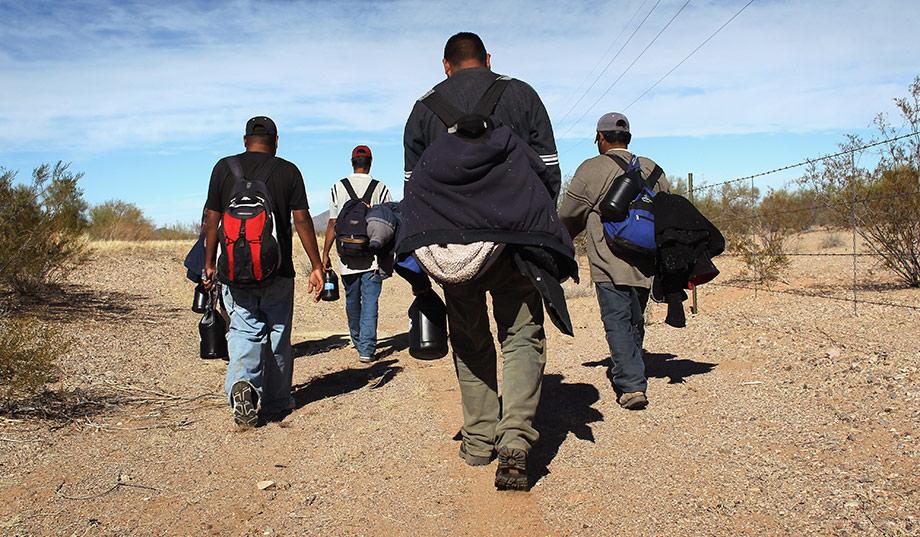
Contradictory to many assumptions, a new report Tuesday revealed the number of unauthorized immigrants in the U.S. has stabilized in recent years after decades of rapid growth. Released by the Pew Research Center, the report shows the population of Mexicans living illegally in the United States has decreased 1.1 million from its peak in 2007 to 5.8 million in 2014. While Mexicans still made up 52 percent of all unauthorized immigrants in 2014, the origin countries of unauthorized immigrants have shifted, with the number from Mexico declining since 2009 and the number from elsewhere rising. The analysis of census and other government data also found that the in Alabama — along with California, Georgia, Illinois, Kansas, Nevada and South Carolina — the illegal immigrant population has declined. In all of the states, the decline was due to a decrease in unauthorized immigrants from Mexico. According to the data, Alabama’s undocumented immigrant population dropped from some 80,000 illegal immigrants in 2009 to 65,000 illegals in 2014. “The number of unauthorized immigrants from all other countries rose in Alabama during those years, but not as much as the number from Mexico went down,” according to the report.
Pew Research: Republicans, Democrats have starkly different foreign affairs priorities

A new comprehensive study on American views on foreign affairs finds to no surprise that Republicans are from Mars and Democrats from Venus, but also finds Republican presidential candidate Donald Trump‘s supporters more isolationist than anyone. The survey, released Thursday by the Pew Research Center, finds that Democrats consider the nation’s biggest global fears to be climate change, ISIS, cyberattacks and disease pandemics, and few lose much sleep over threats to the United States from Syrian refugees, China or Russia. Republicans, on the other hand, worry about just about every global menace except climate change, and their biggest concerns are ISIS, cyberattacks, Syrian refugees, and global economic instability. The same survey breaks out foreign affairs issues by candidate supporter, and finds Trump’s supporters far less likely than other candidates’ to want to see the United States intervene militarily or economically in other countries. Trump supporters are most likely to want to see the United States spend more on the war on terror and more on the U.S. military, while also saying America is already too involved overseas. Trump supporters mainly want to see America provide foreign aide. Overall, the survey found a relatively broad isolationist viewpoint. “The public views America’s role in the world with considerable apprehension and concern. In fact, most Americans say it would be better if the U.S. just dealt with its own problems and let other countries deal with their own problems as best they can,” Pew reports in its survey, “Public Uncertain, Divided Over America’s Place in the World,” posted Thursday. Among the lengthy report’s findings: Overall, 45 percent of Americans think military spending should stay about as it is, while 35 percent believe that it should be increased and 24 percent think it should be decreased. There is a dramatic split by party, however; 61 percent of Republicans think military spending needs to be increased, compared with 31 percent of independents and 20 percent of Democrats. Overall, 57 percent of Americans think the U.S. should deal with its own problems for now, and 37 percent believe that it should help other countries with their problems. Similarly, 41 percent of Americans think the country is doing too much to support other countries, 28 percent think the current programs are just about right, and 27 percent think they’re not enough. 65 percent of Trump supporters believe U.S. foreign aid is a bad thing, while 55 percent of Democrat Hillary Clinton supporters think it’s a good thing. Supporters of Democrat Bernie Sanders and now ex-candidates Republicans U.S. Sen. Ted Cruz and Ohio Gov. John Kasich are all pretty evenly split on the question. Overall, 54 percent of Americans think the United States is the world’s leading economic power; followed by 34 percent who believe it is China; 6 percent, Japan; and 2 percent the European Union. Overall, 72 percent of Americans think the United States is the world’s leading military power; followed by 12 percent who believe it is China, 10 percent, Russia; and 2 percent the European Union. 91 percent of Republicans think that ISIS and similar groups are a major threat to U.S. security, while 76 percent of both Democrats and independents think that. 77 percent of Democrats believe climate change is a major threat to U.S. security, compared with 52 percent of independents and 26 percent of Republicans. 77 percent of Trump supporters sympathize with Israel and 10 percent with Palestinians. For Clinton supporters the split is 47 to 27 percent; For Sanders supporters it’s 33 to 39 percent. Trump and Clinton supporters generally agree on the balance between homeland protection measures and civil liberties, while Sanders supporters disagree: 66 percent of Trump’s supporters think the country’s anti-terrorism policies have not gone far enough, and 20 percent think too far, threatening civil liberties. For Clinton’s supporters the split is 51 to 35 percent, while for Sanders’ its 33 to 51 percent. 54 percent of Trump’s supporters think the U.S. does too much to try to solve the world’s problems. For Clinton’s supporters, it’s 34 percent and for Sanders’, 42 percent. Overall, 41 percent of Americans think so. Overall, 49 percent of Americans think that U.S. involvement in the global economy is a bad thing, and 44 percent a good thing. The opposition was more pronounced among Republicans, older people and people with limited educations. People ages 18 to 29, college graduates and liberals were the only groups that mostly thought involvement in the global economy is a good thing. Landslide majorities of Trump’s supporters oppose the U.S. importing more goods, increasing investment in developing countries and increasing foreign aid. Strong majorities, sometimes over 60 percent, of both Clinton’s and Sanders supporters support those policies. 85 percent of Trump’s supporters think the Syrian/Iraqi refugee crisis is a significant threat to America, while only 40 percent of Clinton’s supporters think so, and only 34 percent of Sanders’. Strong majorities of every party and candidate constituency support the current U.S. military campaign against ISIS, ranging from 56 percent of Sanders’ supporters to 66 percent of Trump’s supporters. But almost no group majority believes that the anti-ISIS campaign is actually going well, except for Clinton’s supporters (57 percent.) The biggest difference by party is on the question of whether overwhelming use of military force against global terrorism is a good thing or bad thing. Republicans think it is the best way to defeat terrorism, by 70 percent to 24 percent. Democrats think it would only inspire more worldwide hatred of the U.S., leading to more terrorism, by 65 percent to 31 percent. Independents were pretty split, leaning slightly toward worrying about fostering worldwide hatred (49 percent to 45 percent.) Most of the analysis in the Pew report is based on telephone interviews conducted April 12-19 among a national sample of 2,008 adults, 18 years of age or older, living in all 50 U.S. states and the District of Columbia (505 respondents were interviewed on a landline telephone, and 1,503 were interviewed on a cellphone, including 914 who had no landline telephone). Some
Poll: Americans have an unfavorable view of the GOP
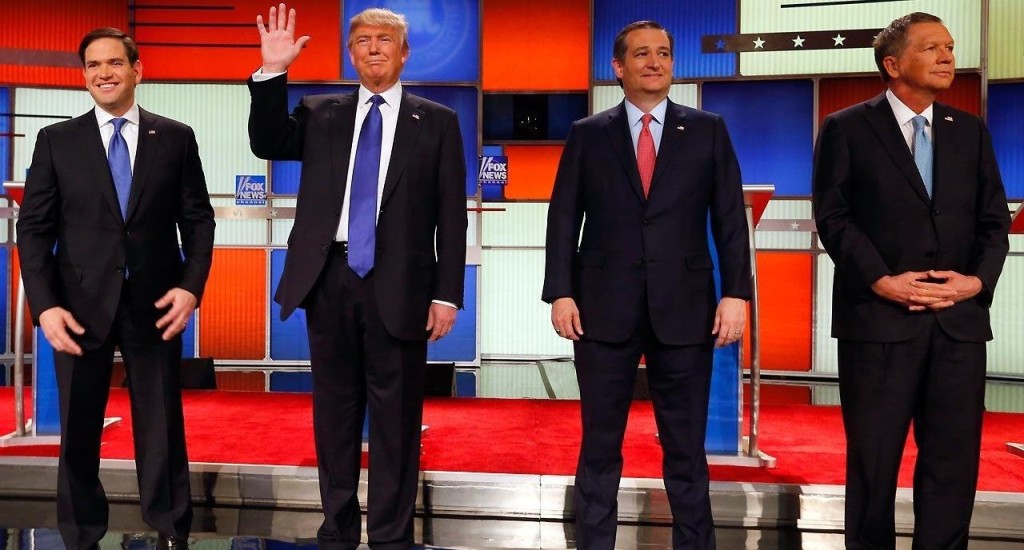
The Republican Party may have an image problem. According to a report by the Pew Research Center, 62 percent of Americans have an unfavorable view of the Republican Party. That’s up since October, when 58 percent of people said they had an unfavorable view of the GOP. The survey found 33 percent of the public has a favorable impression of the Republican Party. When it comes to the Democratic Party, 50 percent of adults said they had an unfavorable opinion of the party; while 45 percent of adults said they had a favorable opinion. The national survey of 2,008 adults found Democrats had a far more favorable impression of their party than Republicans. The study found 88 percent of Democrats viewed their party favorably, while 68 percent of Republicans had a favorable opinion of their party. When it comes to independents, 28 percent have a favorable opinion of the GOP. Of those independents who consider themselves Republican-leaning, 50 percent have a negative view of the party. The survey, conducted April 12 through April 19, found that 37 percent of independents had a favorable impression of the Democratic Party; while 63 percent of Democratic-leaning independents had a favorable view of the Democratic Party. “Overall, a quarter of the public now expresses unfavorable opinions of both political parties,” the report said. “This is driven in part by the growing share of Republicans and Republican leaners who view the GOP negatively, and by the overwhelming shares in both parties who view the opposing party unfavorably.” According to the report, the negative ratings in both parties are “higher today than in previous presidential election years.” Seven percent of adults had unfavorable opinions of both parties in 2000; while 18 percent of adults viewed the parties unfavorably in 2012.
Marc Yacht: The voters are angry and unhappy
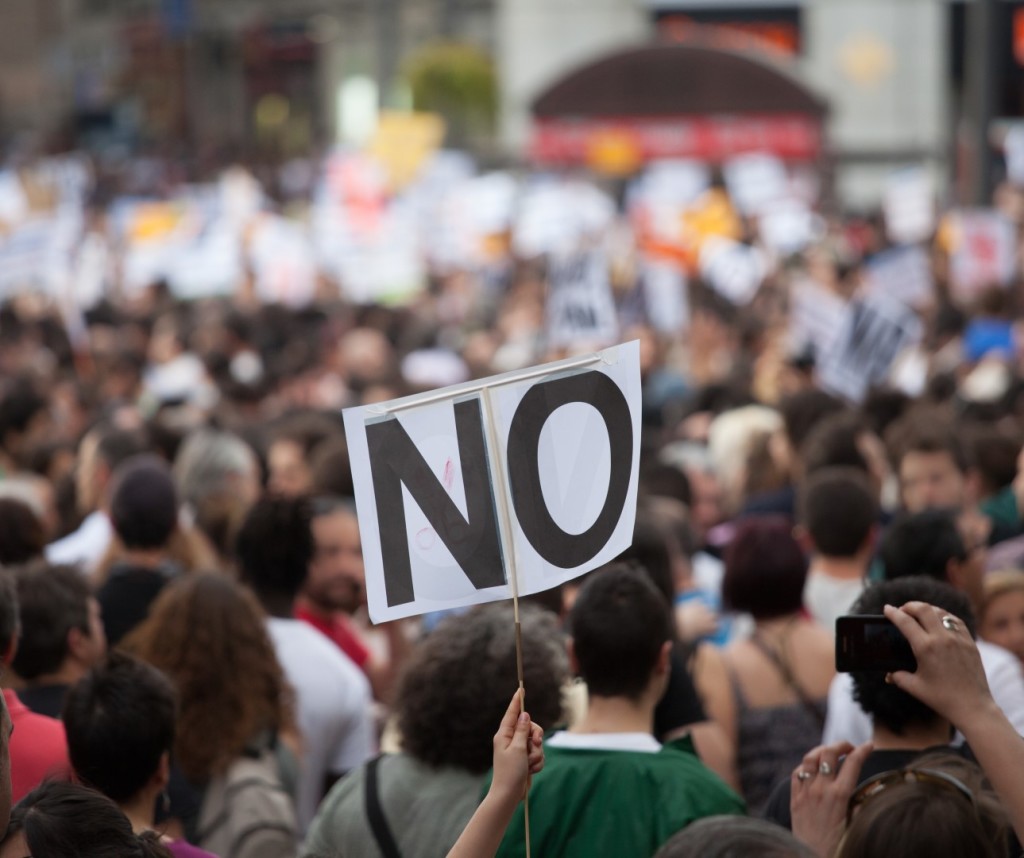
The late singer Ted Lewis in top hat, cane and tuxedo would look straight at the audience and ask, “Is everybody happy?” He would go on to sing, “Me and My Shadow” or any number of songs in his repertoire. The audience laughed then, but there would be little amusement today. Very few are happy. Democrats and Republicans disagree on most issues, but they are kindred spirits in their distaste for political leadership. According to numerous Pew Research Center polls, Americans have lost confidence in traditional politics. Voters feel betrayed. Republican distaste for Democrats and President Barack Obama runs much deeper than suggested racial bias. The Democratic disdain for Republicans has to do with congressional gridlocks and the GOP’s attitudes about the poor and women’s rights. The popularity of Donald Trump and Bernie Sanders shows the parties’ failure to deliver what voters expected. Republicans and Democrats feel abandoned and are convinced that big money drives the political agenda. They have been lied to and deceived for decades and are right. Now, the birds are coming home to roost. At stake is the future of the two-party system. Trump may hold the key to Republican survival. Sanders’ popularity may not destroy the Democrats but should change their direction and focus. Despite arguments by the Obama administration that the economy is better, the middle and working classes are not seeing this in their wages and lifestyle. What they are seeing is an abuse by corporate executives to fatten their wallets while using lobbying influence to undermine wages. The middle class now feels this pinch. Frontline plant workers have suffered stagnant wages for decades. Many of those workers have been staunch Republicans but cannot ignore inadequate incomes. Furthermore, the future appears bleak. The millionaires, billionaires, corporations and Wall Street are the villains. People believe that generous bonuses were paid to executives with money that was supposed to assist people who were losing their homes. Few were helped. Called “corporate welfare,” the abuses continue. Neither Republicans nor Democrats have digested that betrayal, though each side blames the other. Both sides are to blame. There has been no accountability for the flagrant fiscal abuse. All voters are frightened of terrorism. Recent events in Europe and California perpetrated by extremist Muslims have Americans scared. Irresponsible media pundits are whipping up hate but clearly more is needed in the way of policy than Muslim appeasement. A lack of a sound immigration policy angers voters. Political correctness is thwarting needed action. The public needs to know what is being done to identify Muslim extremist groups to avert further tragedies. Congressional gridlock has angered both sides. People expect Congress to function and many voters are abandoning their party leaders because of the dysfunction. A Gallup poll says that Americans believe that government is to blame for the sluggish economy, lack of jobs and immigration chaos. Politicians are seen as abrogating their responsibility to the people who elected them. The U.S. is losing respect internationally. Americans note that other rich nations see a divided America becoming more estranged from its citizens. Trump and Sanders have tapped into the angry American voter. Both parties may have lost the confidence of their constituents. Once trust is lost, it is very difficult to regain. The parties have neglected their voters for too long. If the Republican leaders are successful and derail Trump, how will Republican voters react? If the Democrat leadership marginalizes Sanders, how will Democratic voters respond? Voters on both sides agree that we need politicians who will serve the public. Most voters feel elected officials have failed them. *** Dr. Marc Yacht, MD, MPH is a retired physician living in Hudson Florida.
Pew Research: Here come Asian immigrants, Millennials and unaffiliated voters

Huge immigration over the past 40 years have made Hispanics America’s largest minority group but the next wave is Asian immigrants, and they will overtake Hispanic immigration in coming decades, according to a new report from the Pew Research Center. What’s more, Millennials might already be the nation’s largest generation, surpassing Baby Boomers. Women breadwinners continue to be a rapidly-growing group in America. And whites, blacks, Christians and the middle class all will continue to lose share of the American population over the next few decades, the new Pew report, ten demographic trends that are shaping the U.S. and the world, states. The trends, all clearly evidenced in Florida, which in most ways is ahead of the national curves on demographic trends, lay out new economic, social and political policy challenges, and also, help explain many of the immediate conflicts in American society and politics. “At its core, demography is the act of counting people. But it’s also important to study the forces that are driving population change, and measure how these changes have an impact on people’s lives,” Pew authors D’Vera Cohn and Andrea Caumont state in the report released Thursday morning. “For example, how does immigration affect U.S. population growth? Do Americans feel that children are better off with a parent at home, in an era when most women work? How is the rise of the young-adult Millennial generation contributing to the rise of Americans with no stated religion?” Among the trends Pew highlights are: The U.S. population is projected to become even more diverse in coming decades. Within 50 years, Hispanic, Asian and black Americans will become a majority — 51 percent — while whites slip to 46 percent of the population. Hispanic immigration is declining, and Asian immigration is increasing, so that within three or four decades Asian immigration will surpass Hispanic immigration to the United States. Already, whites are likely to represent less than 70 percent of the American electorate in 2016, making it the most diverse electorate in history. Wide generational gaps are opening on political views, particularly on social issues. “Young adult Millennials are much more likely than their elders to hold liberal views on many political and social issues though they are also less liable to identify with either political party: 50 percent call themselves political independents,” Cohn and Caumont write. And Millennials are the most diverse generation ever, with 43 percent nonwhite. Yet, many Millennials struggle with student debt, and, faced with the weak labor market of recent years, many still live at home. Despite these troubles, Millennials are the most upbeat about their financial future. The share of U.S. adults living in middle-income households fell to 50 percent in 2015, after more than four decades in which those homes served as the nation’s economic majority. Christians are declining as a percentage of the American population while people identifying themselves with no particular religious institution is growing rapidly.
Sonia Melendez Reyes: The middle class is no longer America’s economic majority

The middle class is no longer America’s economic majority. It’s the first time that’s been true in 40 years. There are now more low-income and high-income Americans combined than there are people in the middle class, a study released Wednesday found. According to a Pew Research Center report, there were 120.8 million adults living in middle-income households and 121.3 million in lower- and upper-income households combined in early 2015, marking the first time in the center’s four decades of tracking this data that the size of the latter groups has transcended that of the first. The study defines middle income as adults earning two-thirds to double the national median, which translates today to somewhere between $42,000 and $126,000 a year for a three-person household. Since 1971, the percentage of adults living in the low income bracket has increased from 25 percent to 29 percent, and the percentage of adults living in the highest income bracket has shot up from 14 percent to 21 percent. The middle class, meanwhile, has shrunk from 61 percent to about 50. That’s not entirely bad news. The shrinking of the middle class is due more to the rising number of high-income Americans, which increased 7 percentage points, than it is to the increasing number of low-income Americans, which increased by just 4 points. “In at least one sense, the shift represents economic progress,” the study notes. On the other hand, the rich are getting richer at a pace much faster than the middle and lower classes. According to the study, the median income of people in the high-income bracket shot up 47 percent between 1970 and 2014; meanwhile, the income of the middle class jumped 34 percent, and that of the low-income bracket increased by 28 percent. The widening wealth gap remains a hot topic on the presidential campaign trail. Vermont Sen. Bernie Sanders has made reducing income inequality a pillar of his bid for the Democratic nomination, while candidates from both parties have acknowledged the problem of the middle class’s decline. Sonia Melendez Reyes is the Deputy Communications Director at American Women
Influence of churches, once dominant, now waning in South

Prayers said and the closing hymn sung, tea-drinking churchgoers fill Marble City Grill for Sunday lunch. But hard on their heels comes the afternoon crowd: craft beer-drinking, NFL-watching football fans. Such a scene would have been impossible just months ago because Sunday alcohol sales were long illegal in Sylacauga, hometown of both the actor who played TV’s Gomer Pyle and the white marble used to construct the U.S. Supreme Court building. While the central Alabama city of 12,700 has only one hospital, four public schools and 21 red lights, the chamber of commerce directory lists 78 churches. Yet few were surprised when residents voted overwhelmingly in September to legalize Sunday alcohol sales. Churches lacked either the heart or influence to stop it. That shift is part of a broad pattern across the South: Churches are losing their grip on a region where they could long set community standards with a pulpit-pounding sermon or, more subtly, a sideward glance toward someone walking into a liquor store. In metro Atlanta, youth sports teams regularly practice and play games on Sunday mornings and Wednesday nights — times that were strictly off-limits a generation ago because they conflicted with church worship services. In Mississippi, dozens of businesses display anti-discrimination stickers distributed by a gay rights group rather than worry about a church-based backlash. “It doesn’t matter who wants to buy a house,” said real estate agent Diana Britt, who drives around Jackson, Mississippi, in a work vehicle decorated with one of the stickers. “If they want to buy a house, I’ll sell them a house.” Church-based crusaders against gambling also are on a losing streak as all but two Southern states, Alabama and Mississippi, have lotteries. And, perhaps most tellingly, a recent survey by the Pew Research Center showed 19 percent of Southerners don’t identify with any organized religion. That’s fewer “nones” than in other regions, but the number is up 6 percentage points in the South since 2007. The South is still the Bible Belt, and that same Pew survey found that church affiliation remains stronger in the states of the old Confederacy than anywhere else in the United States. Seventy-six percent of Southerners call themselves Christians, and political advertisements often show candidates in or near church. Religious conservatives remain a powerful force in many Southern statehouses. Still, the same South that often holds itself apart from the rest of the country is becoming more like other U.S. regions when it comes to organized religion, said Jessica Martinez, a senior researcher in religion and public life at Pew. And while race divides many things in the South, the trend is evident among blacks, whites and Hispanic adults, she said. “We’ve seen this sort of broader shift throughout the country as a whole with fewer people identifying as being part of the religious base,” she said. “In the South you see a pattern very similar to what we are seeing in other regions.” Thomas Fuller, a religion professor at Baptist-affiliated Samford University near Birmingham, said there’s no single reason churches are losing the cultural wallop they once packed. Migration into the region and the Internet are but two factors chipping away at a society that seemed much more isolated just a generation ago, he said. “The South is not nearly as homogeneous, is far more diverse culturally now than it’s ever been,” said Fuller. “In a way you’re a little hard-pressed now to talk about Southern culture in a singular fashion. It’s not nearly as one-dimensional anymore or easy to describe.” In Sylacauga, 45 miles southeast of Birmingham, Mayor Doug Murphree said the push for Sunday alcohol sales was linked to attracting new businesses. “We’re not really trying to promote drinking in Sylacauga. But if you look at a big chain restaurant like Ruby Tuesday or O’Charley’s, they’re open on Sunday and a big part of their business is alcohol,” said the mayor. Murphree, who attends a Baptist church, said he met with members of the local ministerial association before the citywide vote to explain the city’s economic situation and the need for Sunday alcohol sales. Pastors listened, and by and large they didn’t preach against it. “They said they were not going to try to block us,” he said. So now, Marble City Grill can sell alcohol after 1 p.m. on Sunday just two blocks up North Broadway Avenue from the white-columned First Baptist Church of Sylacauga. “Things have changed,” said Julie Smith, who owns the restaurant with her husband. “We’ve been open 10 years and at first we had people who wouldn’t come because we sold alcohol. They come now.” Around corner from the restaurant, Dee Walker said he’s attracting a larger crowd every Sunday afternoon at his craft beer and wine shop, The Fermenter’s Market at The Rex, named for the old hotel in which it is located. Walker grew up in neighboring Clay County, the last dry county in Alabama, and recalls the petition drives and fire-and-brimstone sermons anytime someone mentioned legalizing alcohol sales. Southern churches no longer have that kind of influence in many places, Walker said. “You’ve got some diminishing populations when it comes to the religious opposition,” said Walker, standing behind a bar with 36 taps for craft beer. Walker said his customers include church deacons and elders; a Baptist layman quoted Scripture while drinking a hoppy brown ale on a recent weekday afternoon. Joe Godfrey, a Southern Baptist minister and head of a group that calls itself “Alabama’s Moral Compass,” recalls a time when churches were the center of Southern society. “I can remember when schools looking to schedule an event would call the local churches to see if they had anything … that might conflict with the school’s tentative plans. If so, the school would find a different date to hold their event. That is no longer true,” said Godfrey, executive director of Alabama Citizens Action Program. “Today, churches try to find a time to schedule their events when ball teams, schools and civic clubs
New analysis shows annual rate of gun-related homicides down nearly 50 percent since 1993

In the wake of several mass shootings across the country, America’s gun control laws have become a topic of controversial debate with candidates and citizens across the country weighing-in with varied opinions. Many Americans believe the number of gun-related homicides has risen in recent years. That, however, is not the case. According to new analysis released Wednesday by the Pew Research Center of death certificate data collected by the Centers for Disease Control and Prevention, the annual rate of gun-related homicides is on a steady decline — the United States has seen nearly a 50 percent drop between 1993 to 2013. According to Breitbart News, that’s the same time period in which The Washington Post (WaPo) reported firearm ownership doubled in the United States. Estimating that the “average gun owner went from owning 4.1 guns in 1994 to owning 8.1 in 2013.” Which Breitbart News points out “shows that this surge in privately owned guns did not correlate with an increase in firearm-related homicides but with a plunge in the annual firearm-related homicide rate, which fell from 7 per 100,000 Americans in 1993 to 3.6 per 100,000 in 2013.” Data from the Crime Prevention Research Center shows also during that same time, since 2007, the number of concealed handgun permit nationally skyrocketed from 4.6 million to over 12.8 million. In Alabama, the exact number of conceal-carry permits is unclear, but according to statistics from the FBI, pre-sale gun background checks in the state has increased in recent years — rising from 336,102 in 2011 to 621,305 in 2014 — roughly 85 percent.
Bradley Byrne: House acts to stop Iran deal

There is no greater responsibility of Congress than to ensure for the safety and security of the American people. With that in mind, last week I voted against the Iran nuclear agreement, which I believe puts the American people at greater risk. I’ve been opposed to the Iran nuclear talks from the start because I see no reason to believe Iran will keep its word. Iran’s supreme leader has been known to lead crowds in cheers of “death to America” and just last week their leader said Israel will no longer exist in 25 years. As the top state-sponsor of terrorism in the world, Iran has a track record of supporting terrorist groups like Hamas and Hezbollah. Reports indicate that Iran is directly responsible for the death of at least 1,000 American military members in the Middle East. These deaths come in the form of Iranian-backed fighters and Iranian bombs known as “explosively formed penetrators.” Iran clearly wants to bring harm to the American people, and this agreement will make it easier for them to do just that. Iran will be able to acquire new military technologies and weapons, including intercontinental ballistic missiles (ICBMs). Iran does not need ICBMs to hit targets in the Middle East, but they need ICBMs to hit long distance targets like the United States. I also opposed the deal because the American people have made clear they do not support it. In fact, a recent public poll by the Pew Research Center found that only 21% of Americans support the Iran deal. Even worse, just two percent of Americans have a “great deal of confidence” that Iran’s leaders will hold up their end of the agreement. Personally, I have heard from constituents about this issue everywhere I go. At every one of my 16 town hall meetings in August, someone asked me what Congress was going to do to stop the Iran deal. I even had a woman come up to me in the grocery store, with tears in her eyes, asking me to oppose the deal. It is clear my constituents in Southwest Alabama and people all across the country do not want to see this deal move forward. So last week the House used a three step strategy to try and stop the Iran nuclear agreement. First, we passed a “Sense of Congress” that President Obama broke the law by not sharing all the relevant materials related to the Iran deal. There are multiple reports that Iran agreed to a number of “side deals” that have not been made public. One of these deals outlines the process by which inspectors will be given access to Iran’s military bases. Second, the House passed a bill to prevent President Obama from lifting any of the sanctions on Iran. It is clear the economic sanctions were working because the Iranian economy was in shambles, and it would be a mistake to lift the sanctions and give Iran access to billions of dollars. Third, the House rejected the Iran nuclear deal on a straight up or down vote. The vote total was 162 in support of the deal to 269 opposed. There was bipartisan opposition to the agreement with 25 Democrats joining all Republicans to reject the deal. While the Senate has not been able to block the Iran deal yet, I remain committed to doing everything I can in the House to halt this flawed deal. If the deal does go into effect, I will join my colleagues in providing diligent oversight of the Obama administration to ensure Iran does not gain nuclear weapons. Bradley Byrne is a member of the U.S. Congress representing Alabama’s 1st Congressional District.

